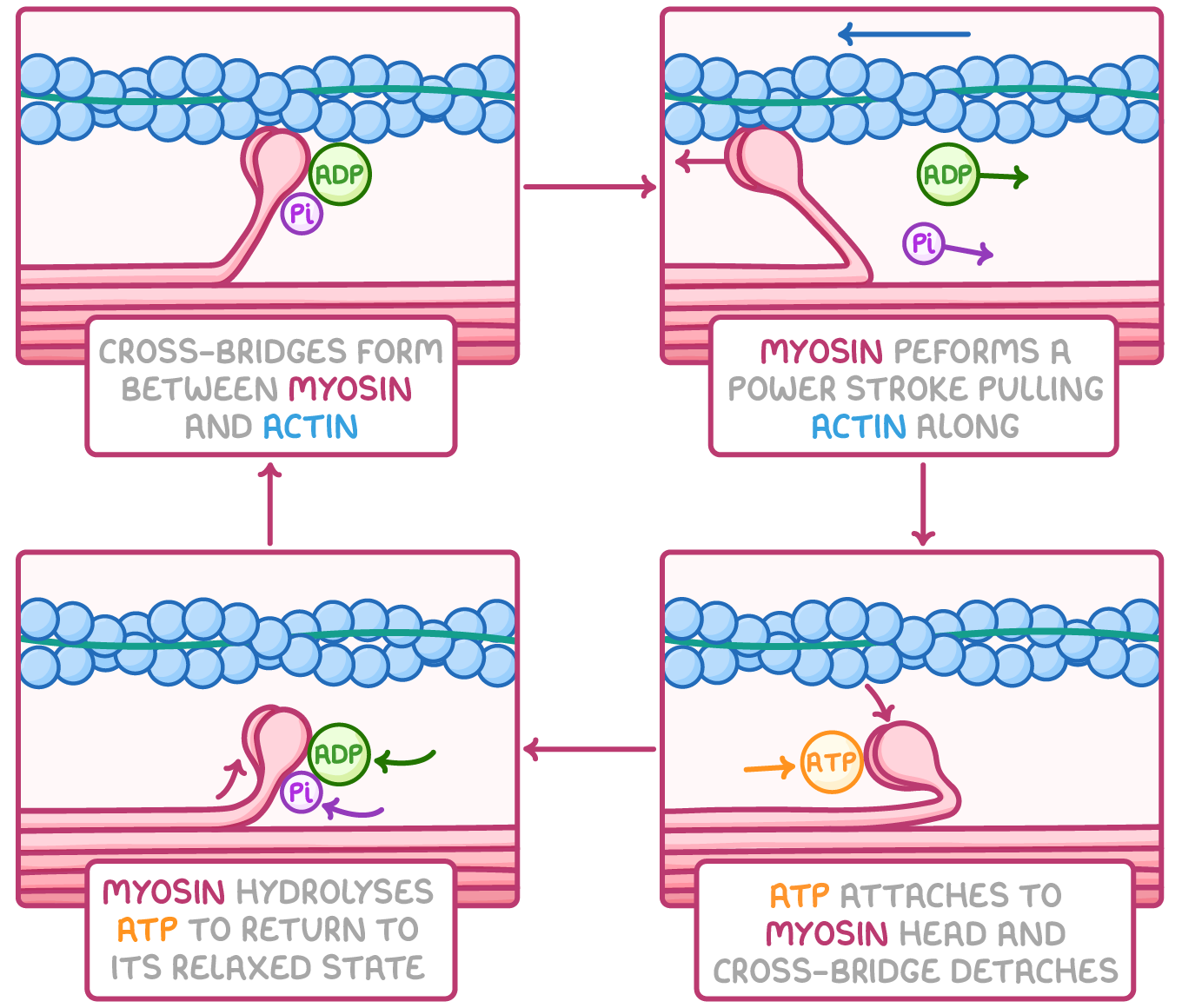How Muscles Contract
This lesson covers:
- The structure of myosin and actin
- Changes in the sarcomere during muscle contraction
- The sliding filament theory
- Muscle relaxation
- The ATP-creatine phosphate system for providing energy
The structure of myosin and actin
The myosin filament has a globular head region that connects with binding sites on the actin filament. Two regulatory proteins, tropomyosin and troponin, modulate this binding.
Myosin heads have:
- A hinge enabling movement.
- One site for binding to actin.
- Another site for ATP binding, providing energy.
Actin filaments have:
- Sites for myosin head attachment, known as actin-myosin binding sites.
- Tropomyosin and troponin proteins attached, playing a regulatory role.
Changes in the sarcomere during muscle contraction
Muscle contraction involves the actin filaments being pulled closer towards each other and towards the M-line in the centre of the sarcomere. This shortens the sarcomere.

Key changes to the sarcomere during muscle contraction:
- The I band and H-zone in sarcomeres shorten due to increased overlap of actin and myosin filaments.
- The A bands remain constant in length.
The simultaneous contraction of many sarcomeres in a myofibril leads to the shortening and contraction of the entire muscle.
The sliding filament theory
The sliding filament theory is the widely accepted model explaining muscle contraction at the molecular level. It details how muscles contract, shorten, and generate force, when actin and myosin filaments slide past each other.

The main steps in the sliding filament theory:
- Calcium ions (Ca2+) bind to troponin, altering its shape.
- This change moves tropomyosin away from actin's binding sites, making them available for myosin.
- Myosin heads attach to these exposed actin filaments, forming actin-myosin cross-bridges.
- The myosin heads execute a power stroke, pulling the actin filament along and releasing ADP.
- An ATP molecule binds to the myosin head, leading to its detachment from actin.
- Ca2+ activates myosin's ATPase activity, breaking down ATP to ADP and phosphate, releasing energy.
- This energy resets the myosin head to its original position.
- The myosin head reattaches to a new actin site further along the filament.
Muscle relaxation
Muscle relaxation occurs when stimulation stops.
Muscle relaxation happens as follows:
- Ca2+ is actively transported back into the sarcoplasmic reticulum.
- Tropomyosin repositions, blocking the actin-myosin binding sites.
- Myosin heads detach from the actin filaments.
- Without cross-bridge formation, sarcomeres revert to their relaxed length.
Energy sources for muscle contraction
Muscle contraction cycles require considerable energy, provided in the form of ATP.
This ATP can be generated through different pathways:
- Aerobic respiration - This is suitable for prolonged, low-intensity exercise.
- Anaerobic respiration - This is used during short, high-intensity exercise.
- The ATP-creatine phosphate system - Creatine phosphate is a quick source of energy in muscles, and is broken down for immediate ATP replenishment without oxygen. It is used for short bursts of vigorous exercise, like a tennis serve.